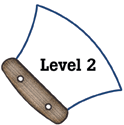
Alaska Science
Key Element C3
A student who meets the content standard should understand that society, culture, history, and environment affect the development of scientific knowledge.
 |
Alaska Science A student who meets the content standard should understand that society, culture, history, and environment affect the development of scientific knowledge. |
|
Performance Standard Level 2, Ages 8–10
|
|
|
|
Sample Assessment Ideas
|
Standards Cross-References
|
||
|
National Science Education Standards Women and men of various social and ethnic backgrounds, and with diverse interests, talents, qualities, and motivations engage in the activities of science, engineering, and related fields such as the health professions. Some scientists work in teams, and some work alone, but all communicate extensively with others. (Page 170) Many individuals have contributed to the traditions of science. Studying some of these individuals provides further understanding of scientific inquiry, science as a human endeavor, the nature of science, and the relationships between science and society. (Page 171) In historical perspective, science has been practiced by different individuals in different cultures. In looking at the history of many peoples, one finds that scientists and engineers of high achievement are considered to be among the most valued contributors to their culture. (Page 171) |
Benchmarks Science is an adventure that people everywhere can take part in, as they have for many centuries. (Page 16) |
|
Table of Contents | Return to Alaska Native Knowledge Network